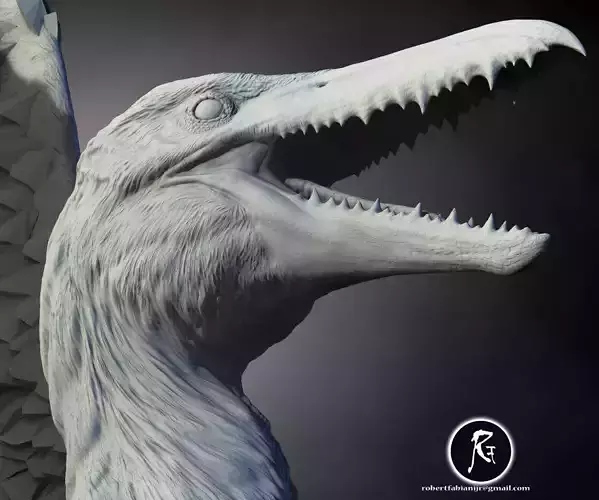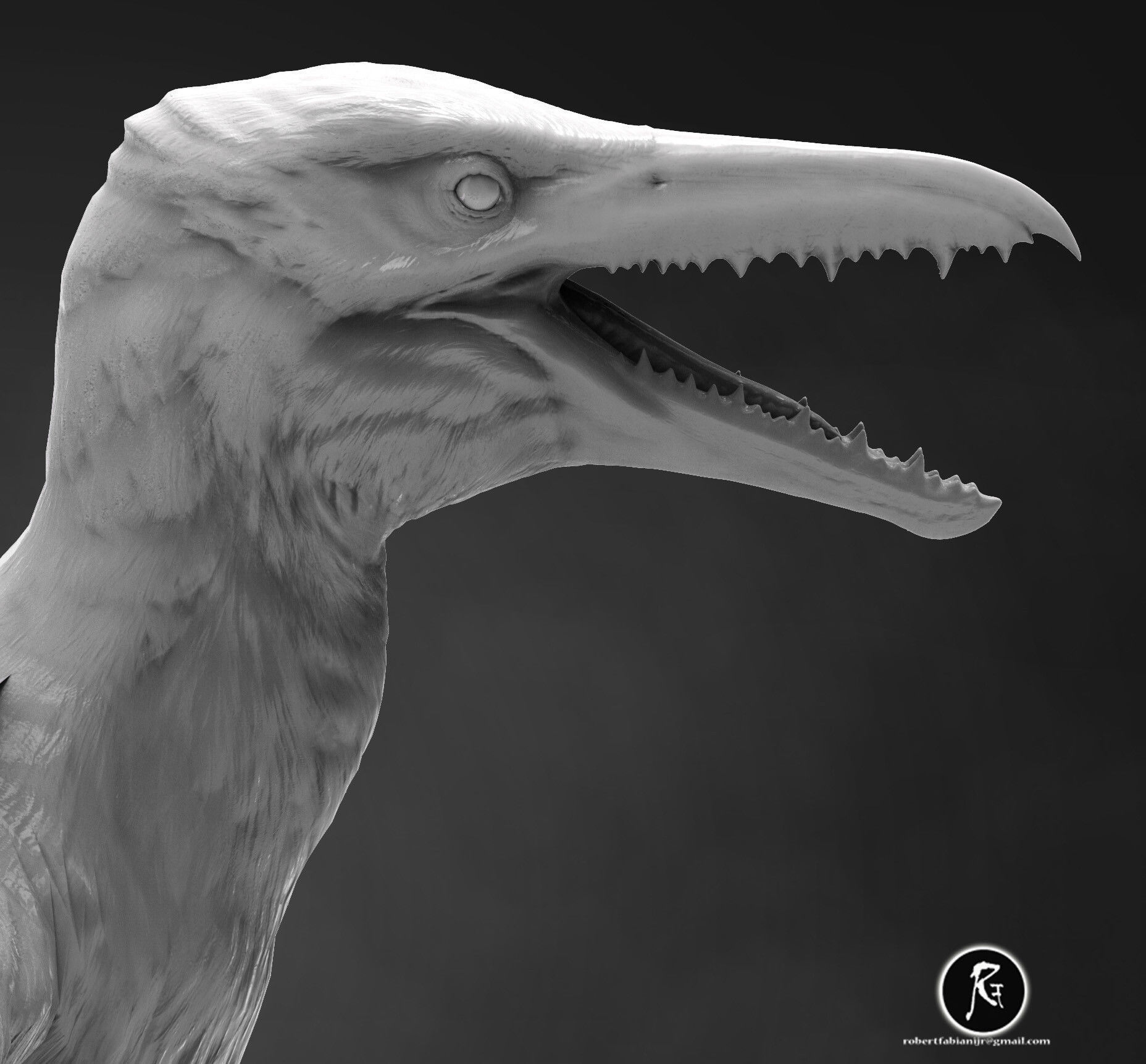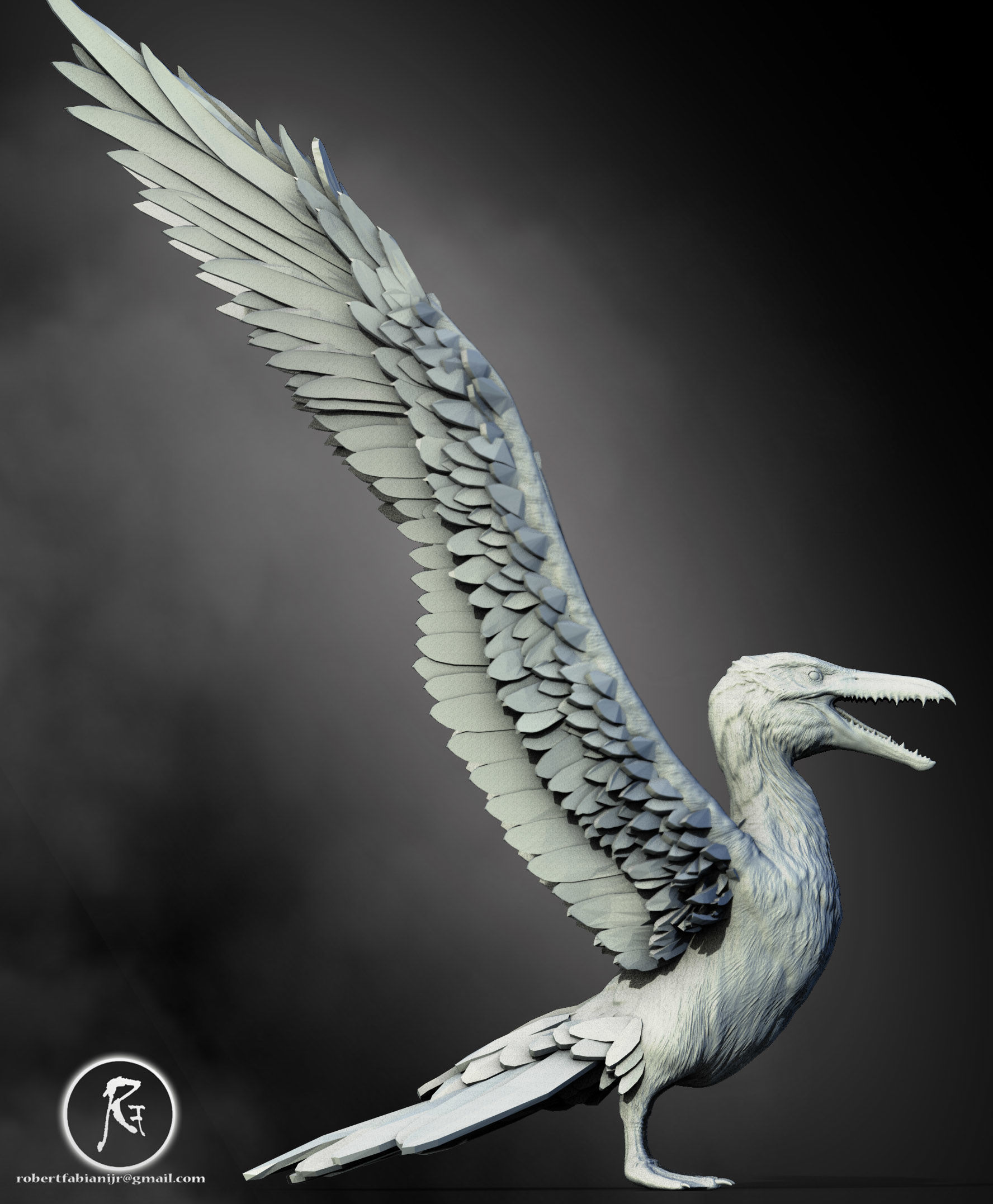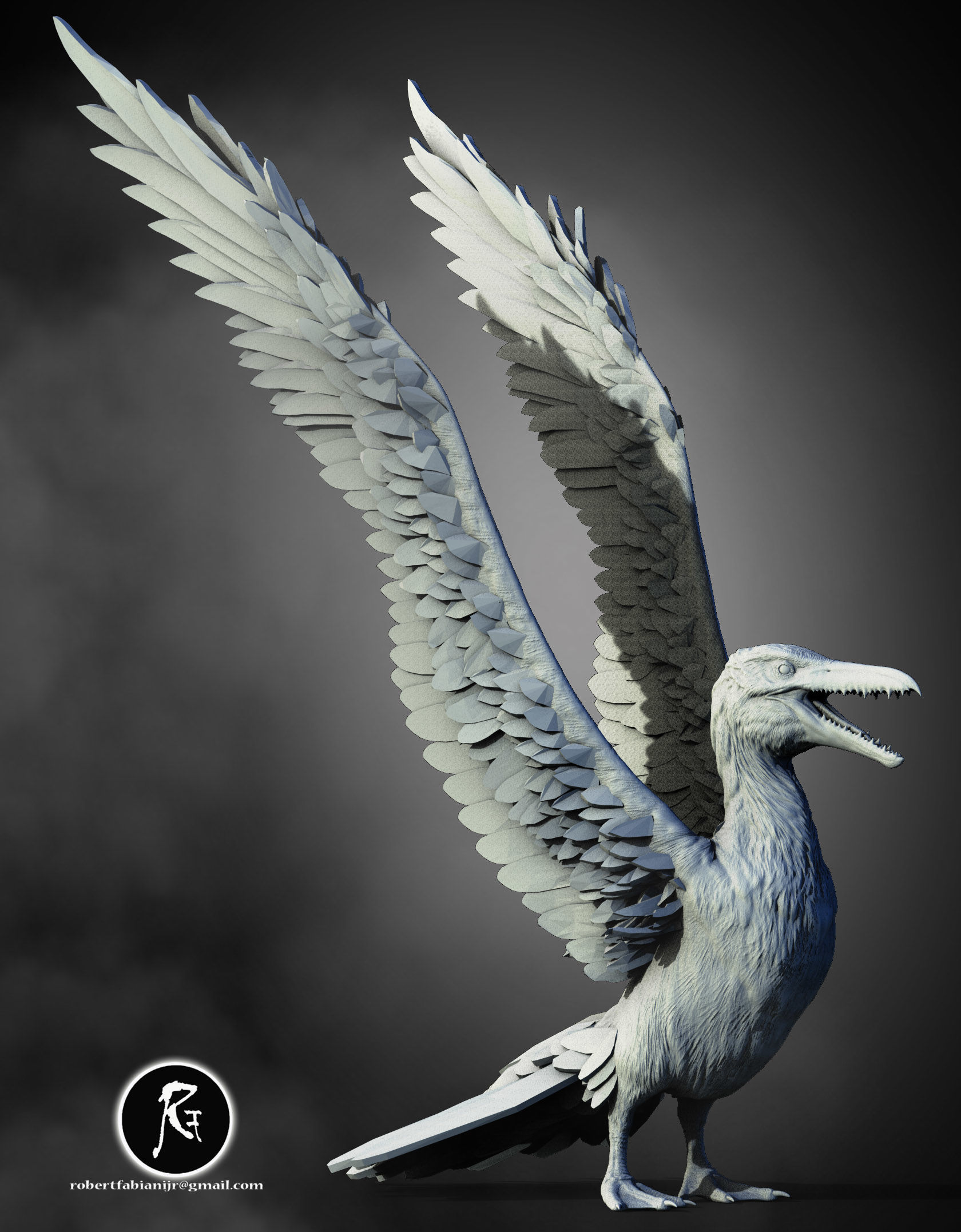
Useto navigate. Pressescto quit
Pelagornis The Giant of the Ancient Skies 3D print model
Description
Pelagornis was one of the largest flying birds to ever exist, soaring through the skies during the Oligocene to Pliocene epochs, roughly 25 to 2.5 million years ago. With an estimated wingspan of up to 20–24 feet (6–7.5 meters), it dwarfed most modern birds, including today’s albatross. Pelagornis had long, slender wings for efficient gliding over oceans and a lightweight skeleton perfectly adapted for flight.
Its most distinctive feature was its beak lined with sharp, bony projections resembling teeth—giving it the nickname “bony-toothed bird.” These pseudo-teeth helped it grip slippery prey like fish and squid. Fossils of Pelagornis have been found on several continents, indicating it had a global range and was a master of the open sea.




